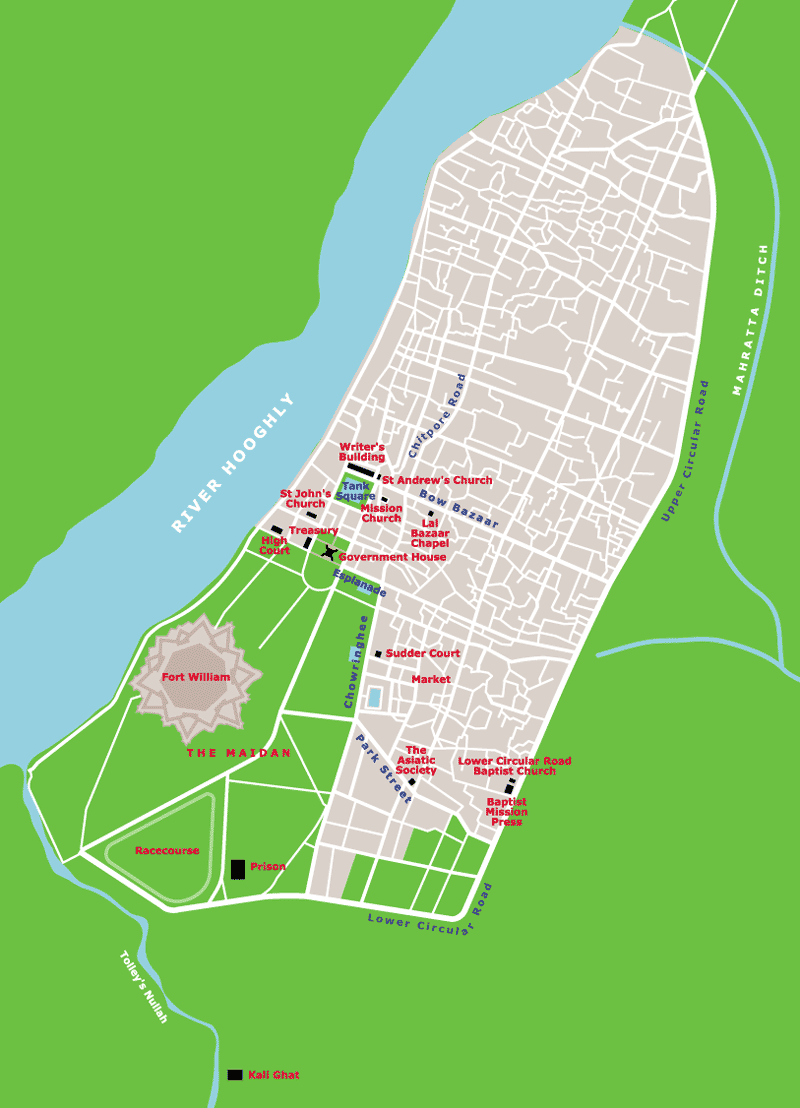

A map of Culcutta, showing the city in the 19th century, based on a contemporary French map courtesy the Centre for the Study of the Life and Work of William Carey D.D., 1761-1834.
Tank Square was the site of the original Fort William. After the capture of the city, in 1756, by Siraj-ud-Daula, the fort was levelled and a new and much larger Fort William was built further south. The Maidan was created as a 'free fire' zone should the city ever be attacked again. The site of the Black Hole of Calcutta was on the Eastern side of the Square. Tank Square was the source of water for the city.
The original Writer's Building also housed Fort William College where William Carey lectured and did much of his translating. He had lodgings close by.
The Prison, where Ward visited (see below), was close to where Calcutta Cathedral and the Victoria Memorial now stand.
John Clark Marshman reproduces from his journal some of William Ward's itinerary on a typical Sunday in Calcutta.
17th June, 1810.
In the morning he received two soldiers into the Church on their confession of faith, and then preached to a large English congregation in the Bow Bazaar Chapel, and subsequently held a meeting in the vestry, to catechise as many children as could be accommodated there. He then went to the house of an enquirer, and proceeded from thence to the great jail, a distance of 3 miles, and preached to the prisoners, first in English and then in Bengali, and held a religious service with 3 soldiers in the hospital. After dusk, he went into the fort, and addressed a congregation of soldiers in a close and suffocating room. In the evening he met a number of friends at the house of one of the members of the church, and passed an hour in social and religious conversation, closing the labours of the day, at ten, with devotional exercises.